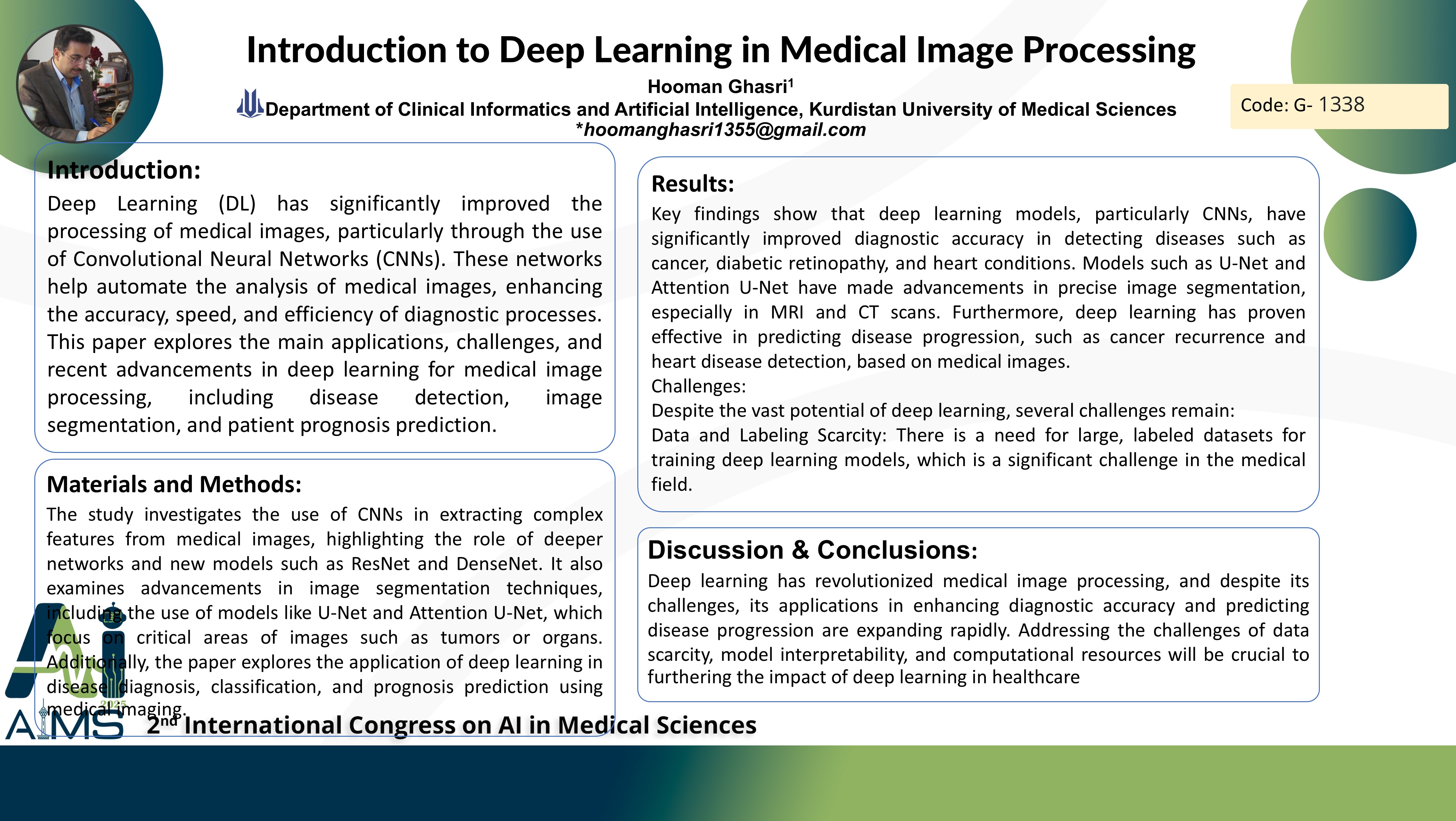مقدمهای بر یادگیری عمیق در پردازش تصاویر پزشکی
کد: G-1338
نویسندگان: Hooman Ghasri * ℗
زمان بندی: زمان بندی نشده!
برچسب: پردازش سیگنال های پزشکی
دانلود: دانلود پوستر
خلاصه مقاله:
خلاصه مقاله
Background and Aims: Deep Learning (DL) has significantly improved the processing of medical images, particularly through the use of Convolutional Neural Networks (CNNs). These networks help automate the analysis of medical images, enhancing the accuracy, speed, and efficiency of diagnostic processes. This paper explores the main applications, challenges, and recent advancements in deep learning for medical image processing, including disease detection, image segmentation, and patient prognosis prediction. Method: The study investigates the use of CNNs in extracting complex features from medical images, highlighting the role of deeper networks and new models such as ResNet and DenseNet. It also examines advancements in image segmentation techniques, including the use of models like U-Net and Attention U-Net, which focus on critical areas of images such as tumors or organs. Additionally, the paper explores the application of deep learning in disease diagnosis, classification, and prognosis prediction using medical imaging. Results: Key findings show that deep learning models, particularly CNNs, have significantly improved diagnostic accuracy in detecting diseases such as cancer, diabetic retinopathy, and heart conditions. Models such as U-Net and Attention U-Net have made advancements in precise image segmentation, especially in MRI and CT scans. Furthermore, deep learning has proven effective in predicting disease progression, such as cancer recurrence and heart disease detection, based on medical images. Challenges: Despite the vast potential of deep learning, several challenges remain: Data and Labeling Scarcity: There is a need for large, labeled datasets for training deep learning models, which is a significant challenge in the medical field. Interpretability and Explainability: Many deep learning models, such as CNNs, function as "black boxes," making it difficult to interpret and explain their results. Computational Resources: Training deep learning models requires significant computational power, which can be a barrier for many hospitals and medical centers. Conclusion: Deep learning has revolutionized medical image processing, and despite its challenges, its applications in enhancing diagnostic accuracy and predicting disease progression are expanding rapidly. Addressing the challenges of data scarcity, model interpretability, and computational resources will be crucial to furthering the impact of deep learning in healthcare
کلمات کلیدی
Deep Learning, Convolutional Neural Networks (CNN)
